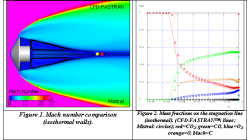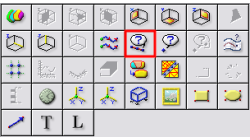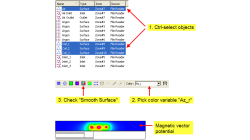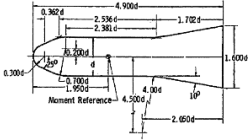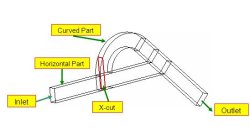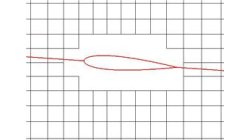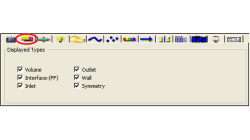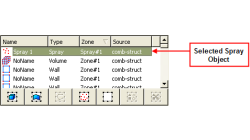- Home
- Resources
- Tips & Tricks
Tips & Tricks
Importing external data in the CFD-VIEW Plotter
Comparing computational results to experimental data is a task often asked of CFD analysts and engineers. The line/curve plotter in CFD-VIEW is commonly used for plotting computational results along curves, such as line probes, surface slices, time histories, etc. CFD-VIEW offers a feature that allows users to import experimental or other external data in the same plot, thus making it easy to compare results.
Abraham
Meganathan
CFD
Chemical-kinetic Model for Mars Atmosphere Re-entry Applications
The shock layer flow over a blunt body entering a planetary atmosphere at a hypersonic speed will dissociate and partially ionize. A reliable prediction of the flow-field for such application requires a chemical-kinetic model. For Mars atmosphere, the five species Park'94 is considered [1]. The dissociation of CO2 is producing C, CO, CO2, O and O2.
Abraham
Meganathan
CFD
User Defined Curve Probes in CFD-VIEW
CFD-VIEW allows the user to create curve probes from a file containing XYZ data. This feature gives the user flexibility of collecting data on any specified/desired curve in the computational domain. As an example of use, these "curved line" probes could be used to sample simulation data at the same locations that experimental data was collected.
Abraham
Meganathan
CFD
Tracking Multiple Variables with Multiple Legends
When post-processing with CFD-VIEW, one may wish to display two different variables on two different objects. This requires the use of two legends to correspond to the different color mapping of the variables. The legend tracking feature in CFD-VIEW can be used to achieve this. If this topic is of interest to you, please read on.
Abraham
Meganathan
CFD
Improvements to Parallel Simulation Setup in CFD-FASTRAN
Setting up and launching a parallel simulation has become much simpler and easier in FASTRAN. This note discusses some of these developments. Let’s start with things that have not changed. There are still two versions of CFD-FASTRAN solvers for parallel cases. The difference between the two versions is the underlying parallel communication mechanism, the choice of which is decided by the type of mesh used.
Abraham
Meganathan
CFD
Simulation of the Hypersonic Flow Past a Blunted Cone-cylinder-flare (HB-2) using CFD-FASTRAN
Study of supersonic flows is of high interest for a wide variety of problems including design of high speed planes and other related applications [1]. This user tip presents a validation of numerical methods against experimental data.
Abraham
Meganathan
CFD
Clipping of X, Y, Z, Arbitrary Cuts and Iso-Surfaces in CFD-VIEW
In CFD-VIEW, performing X, Y, Z, arbitrary cut and iso-surface operations on volumes yield surface objects. One may desire to visualize and/or perform calculations in a user specified spatial range of the surface instead of the whole surface.
Abraham
Meganathan
CFD
Blanking Option in CFD-VIEW for Visualizing Chimera Grids
CFD-FASTRAN uses closed surfaces, such as walls or blocked regions, to create Chimera holes (or blanked regions) in a grid. By default, the number of buffer layers is set to 1. This means that a closed surface will cut a hole in any mesh that overlaps it, and the initial "blanking" of grid cells defines the hole.
Abraham
Meganathan
CFD
Using CFD-VIEW Display Types
When post processing a simulation in CFD-VIEW, you will often be working with multiple types of objects. Volumes and Surfaces are two types objects that you will most definitely have whether the model is 2D or 3D.
Abraham
Meganathan
CFD
Using the "Extra Variable" in CFD-VIEW
In CFD-VIEW, the Extra Variable list that appears in the Attribute toolbar is used for different purposes depending on the object type. If you are interested in knowing more about this feature, please read on.
Abraham
Meganathan
CFD

